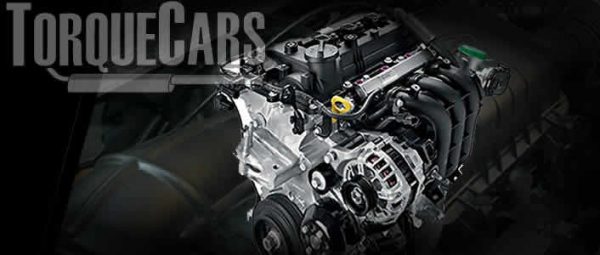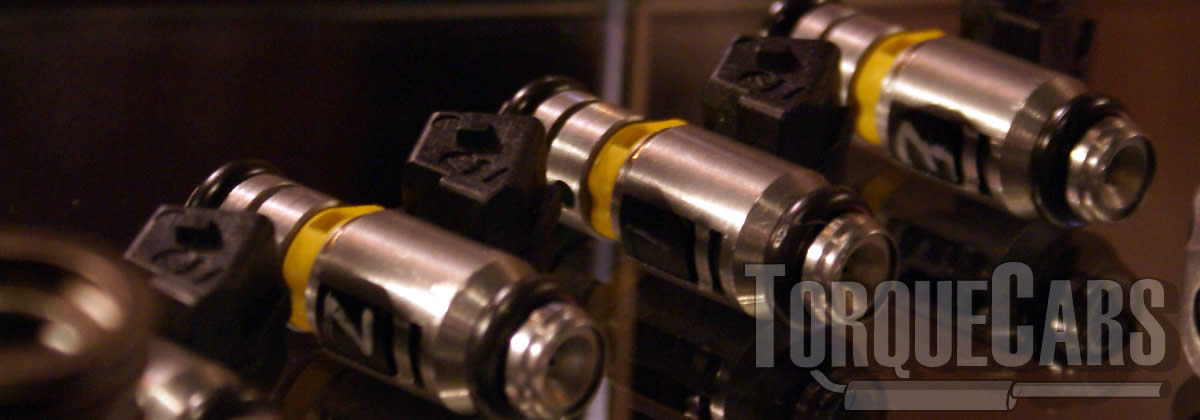Tuning the Hyundai Kappa best performance parts.
"Building the best modified Hyundai Kappa engine!"
Carref prides itself on providing the latest tips and guides to your modification project.
We outline options for your Kappa tuning and point out the premier mods that work.
Hyundai Kappa are popular engines and with carefully chosen uprated upgrades like a remap, turbo upgrades and camshafts you will noticeably improve your driving experience.
We rely on our visitors to pass on tips and tell us about their projects and what worked on their car, and this article is the culmination of the feedback we have received. First let us look at the history and specs of this engine and then consider which tuning modifications work best on it.
History of the Engine
A straight 3 and 4 engine from Hyundai, DOHC 16-valve

- 1.0 L (998 cc)
- 1.2 L (1,197 cc)
- 1.2 L (1,248 cc)
- 1.4 L (1,353 cc)
- 1.4 L (1,397 cc)
- 1.6 L (1,579 cc)
Kappa
- 1.2 L 76hp at 5,200 rpm and 82 lbft of torque at 4,000 rpm.
- 1.25 78hp at 6,000 rpm and 87 lbft of torque at 4,000 rpm
- 1.4 L 94hp at 6,000 rpm and 95 lbft of torque at 4,000 rpm
- 1.4 L turbo 128hp at 5,500 rpm and 156 lb⋅ft of torque at 1,400 rpm
Kappa II ( VVT was added)
- 1.0 L 68hp at 6,200 rpm and 70 lbft of torque at 3,500 rpm.
- 1.25 L 86hp at 6,000 rpm and 90 lbft of torque at 4,000 rpm
Kappa III
- 1.0 T-GDi 118 hp; at 6,000 rpm and 127lbft of torque between 1,500 and 4,000 rpm.
- 1.4 T-GDi 138 hp at 6,000 rpm and 178 lbft of torque between 1,500 and 3,200 rpm.
- 1.6 L 103 hpat 5,700 rpm and 108 lbft of torque at 4,000 rpm
What are the most effective Kappa tuning parts
Just because a parts is popular with Kappa owners it doesn't mean its worth having, instead we'll ultimate parts that will give your Kappa the biggest power gain return for your cash.
Altering your Kappa camshaft will make a dramatic difference to the engine power band. Choosing a higher performance camshaft profile raises the power band accordingly.

Fast road camshafts usually raise the torque throughout the rev band, you may sacrifice a little low end bhp but high end rpm power will be lifted.
Motorsport and race camshafts, raise the high end rpm power band but as a result the car will not idle smoothly and low end power nearly always suffers.
On a road car must carefully try to match your power band to your cars usage.
I'd never find a Motorsport and race camshaft is a pleasure to live with when driving in heavy traffic.
Each engine responds better to more aggressive camshaft durations than others.
The engine timing and fuel pump and injectors also will make differences on the power gains you'll make.
Altering valve durations can alter the power band and on most engines the exhaust and intake durations do not need to match, although most cams and tuners use matched pairs there are some advantages to extending the intake or exhaust durations.
Please watch our introduction Video tutorial to car tuning. Be sure to subscribe and support our new channel.
How to tune your car
- Improve the handling
Focus on Suspension improvements, such as coilovers and make sure the bushings are in good order and that the alignment is correct. Then focus on improving the brakes, with a big disk brake conversion kit and fast road brake pads.
- Remove restrictions
Focus on the intake and exhaust with filters being the common point of restriction in a tuned car. Intercoolers may also become restrictive on turbo engines so this may also need to be uprated.
- Burn more fuel & air
Increase the fuelling so it matches the air coming into the engine. The ratio is important so you need to improve the fuel pump and injectors, so the head mods, big valve conversions, fast road camshafts and forced induction upgrades extra supply of air is adequately met.
- Test and replace any weak parts
Weak areas are commonly the clutch, the turbocharger and pistons and crankshaft in a highly tuned engine. Makes sure these components will cope with your power aspirations.
- The Tune or Remap
A cars ECU controls the fuel, timing, spark and even the turbo in some cases, so to fully extract your gains you should remap the car last and this will fully release the power. Some cars are easy to map, and others require piggyback ECU's or aftermarket ECU's but this is the most vital step of your tuning project.
Modifying to Stage 1:
Drilled & smoothed airbox, Intake headers, Remaps/piggy back ECU, Panel air filters, Fast road camshaft, Sports exhaust manifold.
Modifying to Stage 2:
high flow fuel injectors, fuel pump upgrades, induction kit, Sports catalyst & performance exhaust, Ported and polished head, Fast road cam.
Modifying to Stage 3:
Twin charging conversions, Internal engine upgrades (head flowing porting/bigger valves), Competition cam, Engine balancing & blueprinting, Adding or Upgrading forced induction (turbo/supercharger), Crank and Piston upgrades to alter compression.
ECU mapping will help release the full potential of all the modifications you've done to your Kappa.
It will usually give around 30% more power on turbocharged vehicles and 15% on NASP engines, but you mileage will vary depending on the modifications you've done and the condition of your engine.
It is the main goal to any engine modification task to pull air into the Kappa engine
Intake carry the air from the intake filter and allow it to be pulled into the engine and mixed with fuel.
The shape and flow characteristics of the Intake can make a large improvement to fuel atomisation on the Kappa.
I usually find plenum chambers are in dire need of aftermarket parts, although a few manufacturers provide decently flowing plenum chambers.
Adding a Kappa larger valve kit, carrying out port work and head flowing will also increase bhp, and as an added benefit will make space for a better bhp increase on other parts.

Which turbo upgrades are best?

NASP engines need quite a lot of work when you add a turbo, so we have a separate guide to help you take into account the pros and cons of going this route on your Kappa
The more air to get into an engine, the more fuel it can burn and uprating the induction with a turbocharger upgrade makes massive power gains.
If your car has a turbocharger tuning parts are more reliable and most turbocharged engines are made using uprated components.
There are weak spots for every engine, with some being over specified and some only just able to handle stock power
It is important to find these restrictions and upgrade to higher quality components to handle the power.
We've seen people spending a a stack of money on turbo charger upgrades on the Kappa only to watch the car catastrophically fail just after it's first rolling road session.
Bigger turbo units will usually experience low end lag, and smaller turbo units spool up really quickly but do not have the top end power band gains.
Thankfully the market of turbo units is always improving and we now see variable vane turbo units, where the vane profile is altered according to speed to lower lag and increase top end bhp and torque.
Twin scroll turbo units divert the exhaust flow into 2 channels and feed these at differently angled vanes in the turbocharger. They also improve the scavenging effect of the engine.
It is common that there's a limit in the air flow sensor MAF/MAP on these engines when loads more air is being sucked into the engine.
You'll see that 4 bar air sensors coping with quite large power gains, whereas the OEM air sensor sapped power at a much lower level.
Adding a supercharger or additional turbo will make large bhp gains, although more difficult to get working. We have a twincharger bhp adding guide if you want to read more.
Fuelling
You will need to ensure that the engine is not starved of fuel so should increase the fuelling when you start extending past 20% of a bhp increase. We would recommend you to over specify your injectors flow rate.
We would recommend you to over specify your injectors flow rate.
The rule of thumb is to add 20% when specifying an injector, this takes into account injector deterioration and gives some spare capacity should the engine require more fuel.
We think this one is common sense, but you'll need to match your fuel injector to the type of fuel your car uses as well.
All the following flywheel power targets will assume an injector duty cycle of 80% and a base of 58 psi of fuel pressure at idle.
4 Cylinder turbocharged engines
- 58 PSI 340cc/min 200hp
- 58 PSI 511cc/min 300hp
- 58 PSI 682cc/min 400hp
- 58 PSI 1022cc/min 600hp
4 Cylinder NASP engines
- 58 PSI 285cc/min 200hp
- 58 PSI 426cc/min 300hp
- 58 PSI 568cc/min 400hp
- 58 PSI 853cc/min 600hp
Choosing the right performance exhaust
One of the most common mistakes and problems we see in tuning projects is usually down to the exhaust, or rather a poorly chosen exhaust for your engine.
You may need to upgrade your exhaust if your current exhaust is actually causing a restriction in flow.
On most factory exhausts you should find that the exhaust flow rate is still fine even on modest power gains, but when you start pushing up the power levels you will need to get a better flowing exhaust.
Don't go with the largest exhaust you can buy you'll slow up the exhaust flow rate - the best exhausts for power gains are usually between 1.5 to 2.5 inches. It is the shape and material more than the bore size.
Typically exhaust restrictions can be located the catalyst and filters installed, so adding a higher flowing sports alternative will help avoid this restriction.
Weak spots Issues & problem areas on the
The engines are generally reliable and solid as long as they are regularly serviced and maintained.
Regular oil changes are vital on the , especially when tuned and will help extend the life and reliability of the engine.
For more information on Tuning your engine please join us in our friendly forum where you can discuss tuning options in more detail with our owners. It would also be worth reading our unbiased tuning articles to get a full grasp of the benefits and drawbacks of each modification.
Please help us improve these tips by sending us your feedback in the comments box below.
We love to hear what our visitors have got up to and which upgrades work best for them on each model of car. Comments are used to improve the accuracy of these articles which are continually updated.
If you liked this page please share it with your friends, drop a link to it in your favourite forum or use the bookmarking options to save it to your social media profile.
Check out TorqueCars new YouTube channel, and see their awesome new content...
Feedback
Please use our forums if you wish to ask a tuning question, and please note we do not sell parts or services, we are just an online magazine.
Help us improve, leave a suggestion or tip
